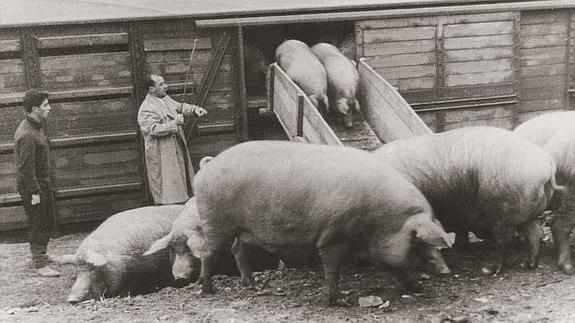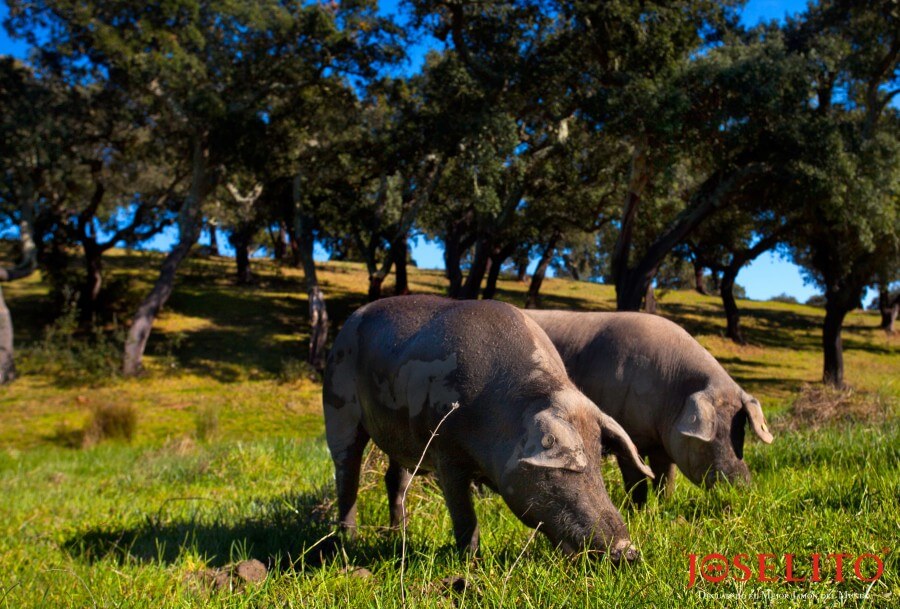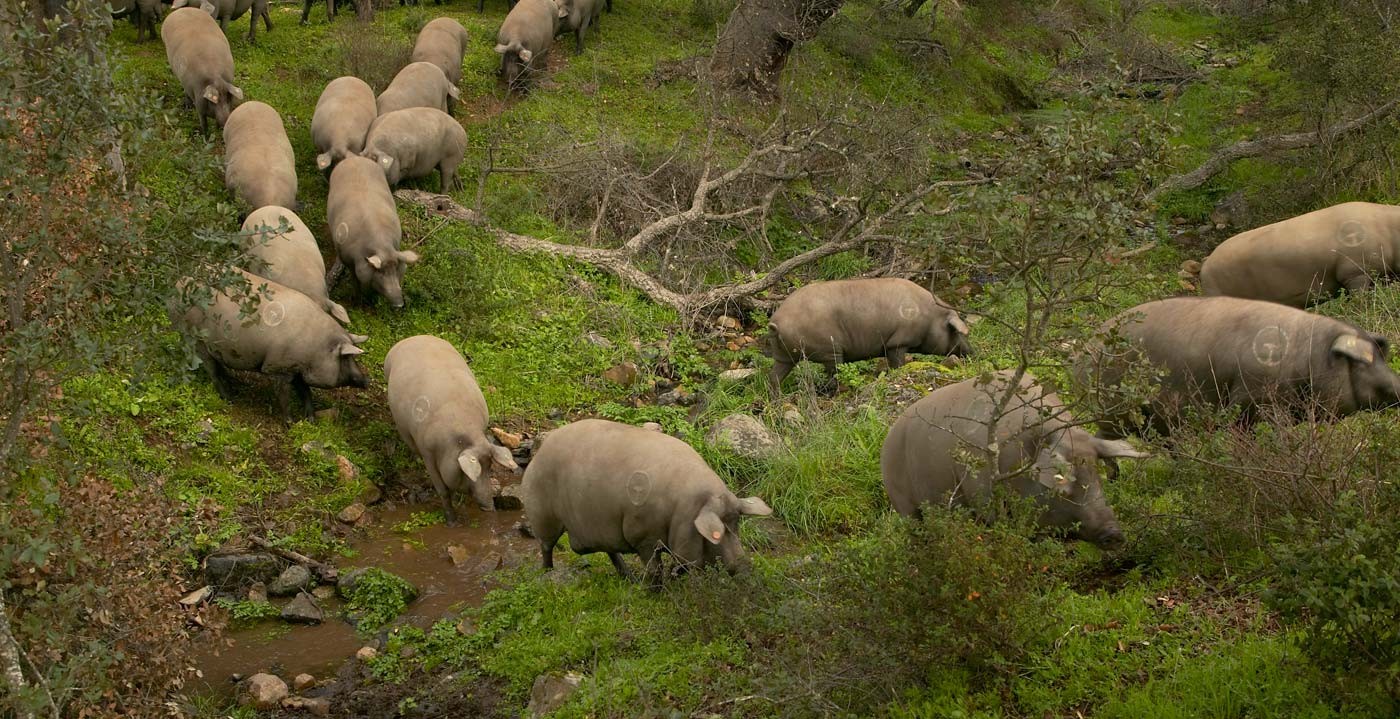 It's not the first time I’ve decided to talk about Spanish ham. But the other day I was fortunate enough to try again what many consider to be the best Spanish ham in the world and I must admit it was spectacular, just as I had remembered it.
It's not the first time I’ve decided to talk about Spanish ham. But the other day I was fortunate enough to try again what many consider to be the best Spanish ham in the world and I must admit it was spectacular, just as I had remembered it.
Whether or not it is the best in the world or not, I will leave up to the experts but what I can say is that you will not be disappointed in the slightest.
Ibérico cured ham from the free-range, acorn-fed Ibérico pig has always been a hallmark of Spanish cuisine and enjoyed all over the country. But now it is making its mark all over the world and one brand stands out for the quality of its product: “Joselito”, the one I was fortunate enough to try the other day, cut by a professional may I add. At the end of this post, I have added a video on how to cut a Spanish ham because it is an art form and takes quite a bit of practice. A good cut can make a mediocre ham good and a bad cut can make a good ham mediocre. Cutting ham is actually a profession in Spain and takes many years to perfect. However, if you are patient and practise a little you shouldn’t have any problems cutting a ham by yourself to a respectable standard. I’m pretty fussy when it comes to ham and I do not like thick-cut slices so to enjoy a professional cut the other day was just divine.

A certain mystique has grown around Spanish cured ham and, among the experts, the town of Guijuelo in Salamanca province (Castile-Leon) has acquired a reputation for producing the finest examples. In fact, while the hams are cured here, the pigs are to be found largely in the Extremadura region in the west of the country where tens of thousands of pigs roam over endless pastures, gorging on the abundant acorns from the thousands of oak trees. Of all the ham producers in the country, none enjoys greater prestige than the family-run business “Joselito”, which now exports its products to 48 countries.
Hams from Joselito, among the most expensive on the market and worth every penny, have won acclaim from leading chefs. According to Basque maestro Juan Mari Arzak and Ferran Adría (considered world’s best chef), ‘Joselito’ is "the best ham in the world."
At first sight, Guijuelo with a population of 6,000 is a discrete sort of place. But, thanks to its flourishing business in pork products, it is one of Spain's most prosperous communities, with relatively few unemployed. At 1,000 m (3,280 ft) above sea level, the town enjoys an ideal climate for curing pork: chilly in winter, hot in summer. As it is a brand with such an established reputation I thought I would research the reasons behind its success.


( photos by 'Joselito Ham' )
The first requirement for a superior-quality ham is a superior breed of pig, the native cerdo ibérico (Ibérico pig). Hams are also distinguished by the way pigs are reared. Many pigs spend little or no time on the open range and are fed mostly on authorised meal. In contrast, the jamón ibérico de bellota comes from free-range animals, feeding on natural herbs and, most importantly, acorns.
Joselito's cerdos ibéricos de bellota roam over more than 100,000 ha (247,105 acres) of wooded scrublands  called Dehesas much of it the company's property and the rest rented, in the Extremadura and Andalusia regions, Salamanca province and Portugal. As part of a 30-year reforestation plan, every year the company plants 70 to 80 thousand trees, mostly holm oaks (Quercus ilex) and cork oaks (Quercus suber). The company's efforts were rewarded this year with a management certificate from the Forest Stewardship Council (FSC), a non-governmental organization promoting responsible forest management worldwide. It is the first time a business of this type has been selected anywhere in the world.
called Dehesas much of it the company's property and the rest rented, in the Extremadura and Andalusia regions, Salamanca province and Portugal. As part of a 30-year reforestation plan, every year the company plants 70 to 80 thousand trees, mostly holm oaks (Quercus ilex) and cork oaks (Quercus suber). The company's efforts were rewarded this year with a management certificate from the Forest Stewardship Council (FSC), a non-governmental organization promoting responsible forest management worldwide. It is the first time a business of this type has been selected anywhere in the world.
A key aspect in producing quality hams is the animals' freedom to roam. Each pig forages for food and water over 2 to 4 ha (4.9 to 9.8 acres) of pasture. This keeps them in shape, which contributes to the particular texture of their flesh. During "la montanera", the months between October and February, each pig eats about 15 kg (33 lb) of acorns a day.
When the two-year-old pigs weigh about 180 kg (396 lb), around 40,000 are transported to Guijuelo to be slaughtered. The hams are stored in sea salt for a week or so, then washed and hung in the "secaderos", with immaculately maintained, carefully ventilated chambers. In the summer heat, the hams sweat and the outer fat melts and penetrates the muscular fibres, a process vital to making the meat tender and aromatic.
For further maturing the hams are stored in dark bodegas at temperatures between 14 and 18ºC (57.2 and 64.4ºF) and humidity between 60 and 80%. More than 400,000 hams, from the years 2004 to 2011, hang in Joselito's installations. Hams from the paleta, or shoulder, are cured for a minimum of two years, and hind-leg hams, known as the Gran Reserva, for at least three years. A select number, vintage hams known as the Colección Premium, is matured for more than 82 months.
The succulent meat in Joselito's hams is purple-red and marbled with veins of pinkish fat. It is, claims the firm, a healthy product, containing oleic acid, vitamins and natural antioxidants which help reduce cholesterol and the risk of arteriosclerosis. Joselito backs this up with the results of scientific surveys and points out that 100 g (3.5 oz) of their ham contains fewer calories than a plateful of rice of the same weight. To improve quality, a staff of 15 in Joselito's research and development department analyzes everything, from the pig's diet to the final product. Joselito also markets pork loin and various varieties of pork sausage, chorizo, salchichón and longaniza (spiced with pepper, salt and garlic), all from free-range Iberico pigs and naturally cured.
Spain exports annually around 20,000 tons (40 million lb) of cured leg and shoulder hams, from all breeds, representing sales worth more than €170 million. 0nly 10% of Spanish cured ham comes from the Ibérico breed, but it is this product which sets the standard and reinforces the country's prestige in foreign markets.
In the words of Ferran Adrià: "Hams like those of Joselito are the standard-bearer of a sector which the whole world can enjoy." So if you have the opportunity to get your hands on some don't let it go by!